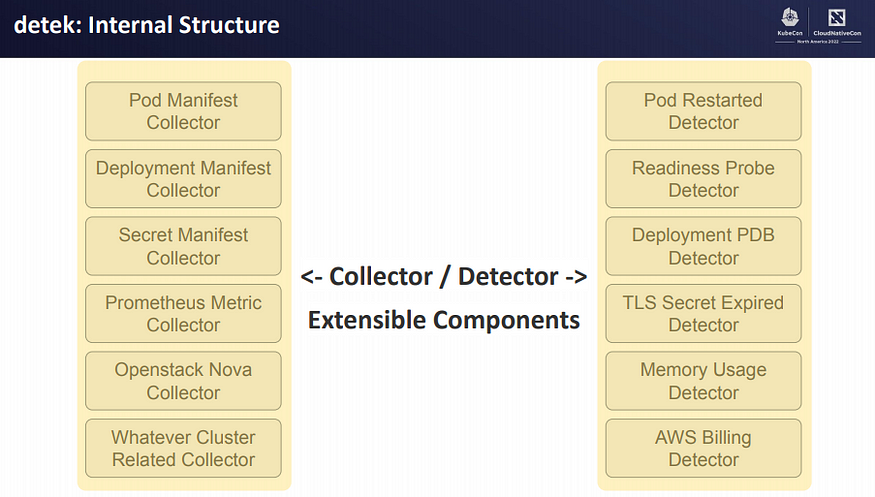티스토리 뷰
2022년 11월에 진행된 OpenInfra & Cloud Native Day Korea 2022 중 관심있었던 세션 내용을 공유합니다.
Session) The Future of Service Mesh
국내 service mesh 현황
- service mesh 어려움 : 보안 적용 어려움, 복잡성 증가, 멀티클러스터/멀티 배포환경 관리
- istio 도입 장애물 : 내부 인력 기술 이해도, TCO 비용 증가, 멀티클러스터, 멀티 배포환경 관리
service mesh 솔루션 소개
- solo.io : istio, envoy 기반 솔루션 서비스, the future of istio is sidecar-less
- 참고 : https://www.solo.io/blog/ebpf-for-service-mesh/
— our enterprise service-mesh product (Gloo Mesh Enterprise) with eBPF to optimize the functionality around networking, observability, and security.
— A service mesh provides complex application-networking behaviors for services such as service discovery, traffic routing, resilience (timeout/retry/circuit breaking), authentication/authorization, observability (logging/metrics/tracing) and more.
— eBPF is Turing incomplete.
— eBPF is ideal for O(1) complexity (such as inspecting a packet, manipulating some bits, and sending it on its way). Implementing complex protocols like HTTP/2 and gRPC can be O(n) complexity and very difficult to debug
— For the complexities of Layer 7, Envoy remains the data plane for the service mesh.
— we see eBPF as a powerful way to optimize the service mesh, and we see Envoy proxy as the cornerstone of the data plane.
- Ambient Mesh : 메시 기능을 l4/l7 분리, cni에 더 많은 기능 활용
Session) Application을 넘어 Infrastructure와 Kubernetes Infrastructure도 GitOps로 관리하기
k8s 클러스터 구성하는 방법
1. infra provisioning : managed k8s service with IaC
2. k8s cluster bootstrapping : kubeadm,
kubespray(https://kubernetes.io/ko/docs/setup/production-environment/tools/kubespray/)
3. addon
kubespray 중심으로 ansible 플레이북 추가하고 통합
- ansible inventory별로 관리
문제점
- 온프렘, vm 에서는 잘 동작 그러나 플레이북 실행 시점에만 적용되어 환경 수정한 부분과 이후 재반영 시 충돌 발생
- 현재 git 저장소 내용과 실제 환경에 적용된 내역과의 비교/추적 및 조치 어려움
- 퍼블릭 클라우드 확장시, 비효율적이고 유지관리 부담
어플리케이션 배포 방법 개선
- decapod 활용해서 app, service들을 gitops 형태로 배포/관리
- gitops 장점 : git 내용과 실제 환경이 동일
Cluster API
- Cluster API는 Kubernetes 클러스터를 프로비저닝, 업그레이드 및 운영하기 위한 선언적 API 및 도구를 제공하는 Kubernetes 하위 프로젝트
Cluster API 장점
- Kubernetes 클러스터 구성뿐만 아니라 가상 머신, 네트워크,로드 밸런서 및 VPC와 같은 기반 인프라 구성 모두 Kubernetes에서 어플리케이션을 배포하고 관리하는 방식으로 정의하며 다양한 인프라 환경에서 일관된 방식으로 클러스터 배포 가능
- GitOps와 결합하여 전체시스템의 버전 및 상태 관리를 일원화할 수 있고 이력을 확인하거나 롤백 등의 작업도 매우 수월하게 수행할 수 있음
- 또한, 풀 리퀘스트 및 리뷰를 통해 최종 변경 사항이 반영되기 때문에 운영상의 오류를 검토하고 바로 잡을 수 있는 기회 제공
Session) Kubernetes에서 확장 가능한 운영(HPA)
HPA
- Scalability 문제를 해결하는 도구 중 하나
No-autoscaling vs Autoscaling
- Autoscaling은 traffic에 따라 자동으로 pod를 확장 및 축소함
HPA 작동 방식
- 부하 생성 -> HPA가 autoscaling 수행 -> 신규 생성 파드도 부하 처리 -> 부하 주입 중단 -> 부하가 줄어들고 pod는 desired 상태만큼 감소함
HPA 효과
- 신뢰성: 사용자 및 application load에 적절하게 대응
- 비용절감
- 운영자동화 : 관리자 개입없이 load 증감에 따른 자동운영이 가능
HPA 작동방식
- HPA horizontal controller
- HPA Metric client : resourceclient, custom_metrics, external_metrics
- HPA Conditions : horizontal controller가 참조하는 metric client
HPA Spec
- HPA CPU / Memory
- HPA conditions : 현재 autoscaling 할 수 있는 여부 표시, replicas=0 설정 시 비활성화됨
HPA Tradeoff
- Responsiveness vs cluster overhead
- Responsiveness : cpu usage avgerage는 항상 load를 반영하지 못함
- Responsiveness : detection delay. HPA sync and metric servers scrap에 지연이 발생
- Target usage utilization이 높으면 비용이 절감되지만 responsiveness가 높음
- 서비스 특성에 맞게 선택
- Keep image size small, keep startup time short, keep readiness check short
Reliability tip
- HPA를 활용하면 pod의 종료 및 생성이 빈번하게 발생. 이러한 경우 reliability를 유지하는 팁
- Gracefully shutdown
1) 각 framework는 gracefully shutdown 지원함.
2) Lifecycle terminationGracePeriodSeconds로 문제 해결 가능
2. Replicas of deployment : HPA가 설정한 값을 deployment manifest로 변경가능. Replicas 속성을 제거해서 대응
3. spike issue : HPA의 짧게 발생하는 peak는 HPA가 대응할 수 없음. Resource burstable QoS 전략으로 대응가능
4. readiness probe : 준비되지 않은 pod가 traffic을 받아서 connection refused가 발생
Session) 쿠버네티스 오브젝트의 Conditions 속성 살펴보기
k8s 오브젝트 일반적인 구성
- apiVersion : 오브젝트가 나타내는 스키마 버전 정의
- kind : 오브젝트가 나타내는 REST 자원 지정 ex) deployment, configmap
- metadata : 오브젝트 자체를 설명하는 메타데이터
— name(namespace안에서 유일한 이름 지정)
— namespace
— labels(서로 연관된 오브젝트 그룹을 구분할 때 사용)
— annotions(오브젝트에 추가적인 정보를 붙일 때 사용)
— resourceVersion(오브젝트를 수정할 때마다 변경되는 문자열 식별자)
— generation(오브젝트 spec 내용이 변경될때마다 증가하는 숫자)
— ownerReference(k8s 오브젝트의 종속 관계를 표현할 때 사용)
- spec & status
- controller : custom resource 사용여부에 따라 operator와 차이
- operator : custom resource 사용
오브젝트별 conditions 구조
- 각각의 상태를 나타낸 dictionary 형식을 가진 리스트 구조
- 오브젝트별로 추가적인 필드를 가진 condition 구조가 있음
- nodeCondition : Node 오브젝트의 상태를 나타내는 NodeCondition 구조체. Node 상태를 표현하기 위해 새로운 type 형태와 field 존재( 정상적인 경우 type: ready, status: true)
- podCondition : Pod 오브젝트의 상태를 나타내는 PodCondition 구조체(정상적인 경우 type: ready, status : true)
- deploymentCondition : deployment 오브젝트의 상태를 나타내는 deploymentCondition 구조체(ReplicaFailure : quota 등 오류날 때 발생. 정상적인 경우 type: available, status : true)
오브젝트 상황별 condiiton 속성 변화
- nodeCondition : MemoryPressure, DiskPressure, PIDPressure, NetworkUnavailable
— 가용메모리 < 100Mi
— 노드 메인 파일시스템 가용 공간 < 10%
— 컨테이너 이미지 및 컨테이너 파일 시스템 가용 공간 < 15%
— 노드 메인 파일시스템 inode 여유 <5%
— 노드에서 할당가능한 PID 여유 < 10%
- podCondition : PodScheduled, Initialized, ContainersReady, Ready, PodHasNetwork
— PodScheduled : NodeAffinity 등을 이용해
— Initialized : initContainers 안에 정의한 컨테이너 실행 중 실패한 경우 initialized 컨디션
— ContainersReady : 컨테이너 이미지를 가져오지 못했거나 실패한 경우
-> 위 세가지 조건을 만족하면 Ready 상태가 됨
- deploymentCondition : Available, Progressing, ReplicaFailure
— ReplicaFailure : 일시적인 에러 혹은 quota 할당량 부족으로 인해 pod 생성 실패 시 ReplicaFailure
— Available : MinimumReplicasAvailable 조건이 만족되면 True로 변경(spec.replicas, spec.strategy.rollingUpdate.maxUnvaialble..)
Session) 7천개가 넘어가는 클러스터에서 쏟아지는 온콜 이슈 처리하기
One Large Cluster vs Lots of Small Cluster
-> Lots of Small Cluster
- 격리, 보안 보장은 compliance를 위한 필수 요건
- 개발자유도 보장 및 개별 최적화
private Kubernetes as a Service,DKOS (Datacenter of Kakao Operating System)
- 7천개 이상 클러스터 존재
- 이에 따른 온콜 이슈 증가
- Too Many(idle) Clusters
- 컴퓨팅 리소스 점유
2. Lots of on-call Issues
- 모든 개발자가 k8s를 잘알고 사용하지 않음
3. Known issues being forgotten
- Even though we know some of issues right now, We forget after a few years
>>> Automation for Operation -> We need a “Detection as a Code”


- Collector / Detector ->Extensible Components
blog migration project
written in 2022.11.1
https://medium.com/techblog-hayleyshim/k8s-openinfra-cloud-native-day-korea-2022-a53db49d9efe
'IT > Container&k8s' 카테고리의 다른 글
| [k8s] Kube DNS & External DNS (2) | 2023.10.29 |
|---|---|
| [k8s] Kubernetes Operations (kOps) Install in AWS (0) | 2023.10.29 |
| [k8s] Network Resources (1) | 2023.10.29 |
| [k8s] 2022 kubecon- Security (0) | 2023.10.29 |
| [k8s] Debugging a k8s cluster (1) | 2023.10.29 |
- Total
- Today
- Yesterday
- k8s
- 혼공파
- AI Engineering
- 파이썬
- terraform
- S3
- 도서
- NFT
- EKS
- VPN
- cni
- NW
- cloud
- security
- CICD
- GKE
- SDWAN
- AI
- IaC
- AWS
- 혼공단
- ai 엔지니어링
- PYTHON
- k8s cni
- GCP
- autoscaling
- handson
- 혼공챌린지
- k8s calico
- operator
| 일 | 월 | 화 | 수 | 목 | 금 | 토 |
|---|---|---|---|---|---|---|
| 1 | 2 | 3 | 4 | 5 | 6 | |
| 7 | 8 | 9 | 10 | 11 | 12 | 13 |
| 14 | 15 | 16 | 17 | 18 | 19 | 20 |
| 21 | 22 | 23 | 24 | 25 | 26 | 27 |
| 28 | 29 | 30 | 31 |
